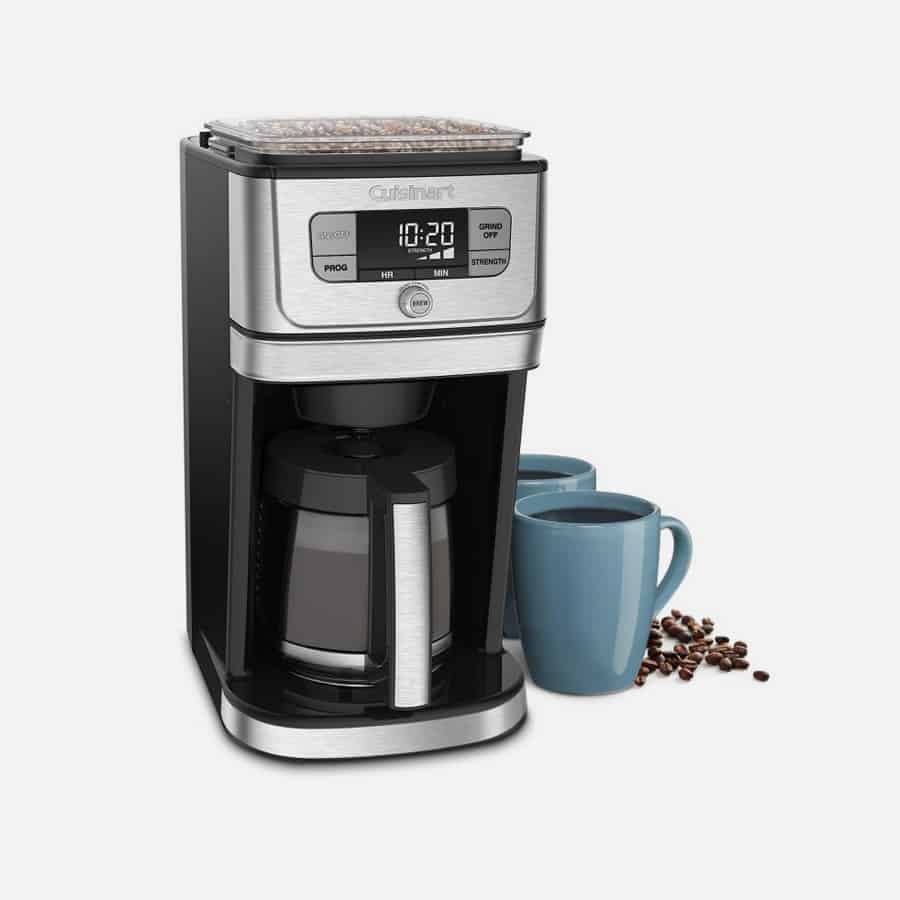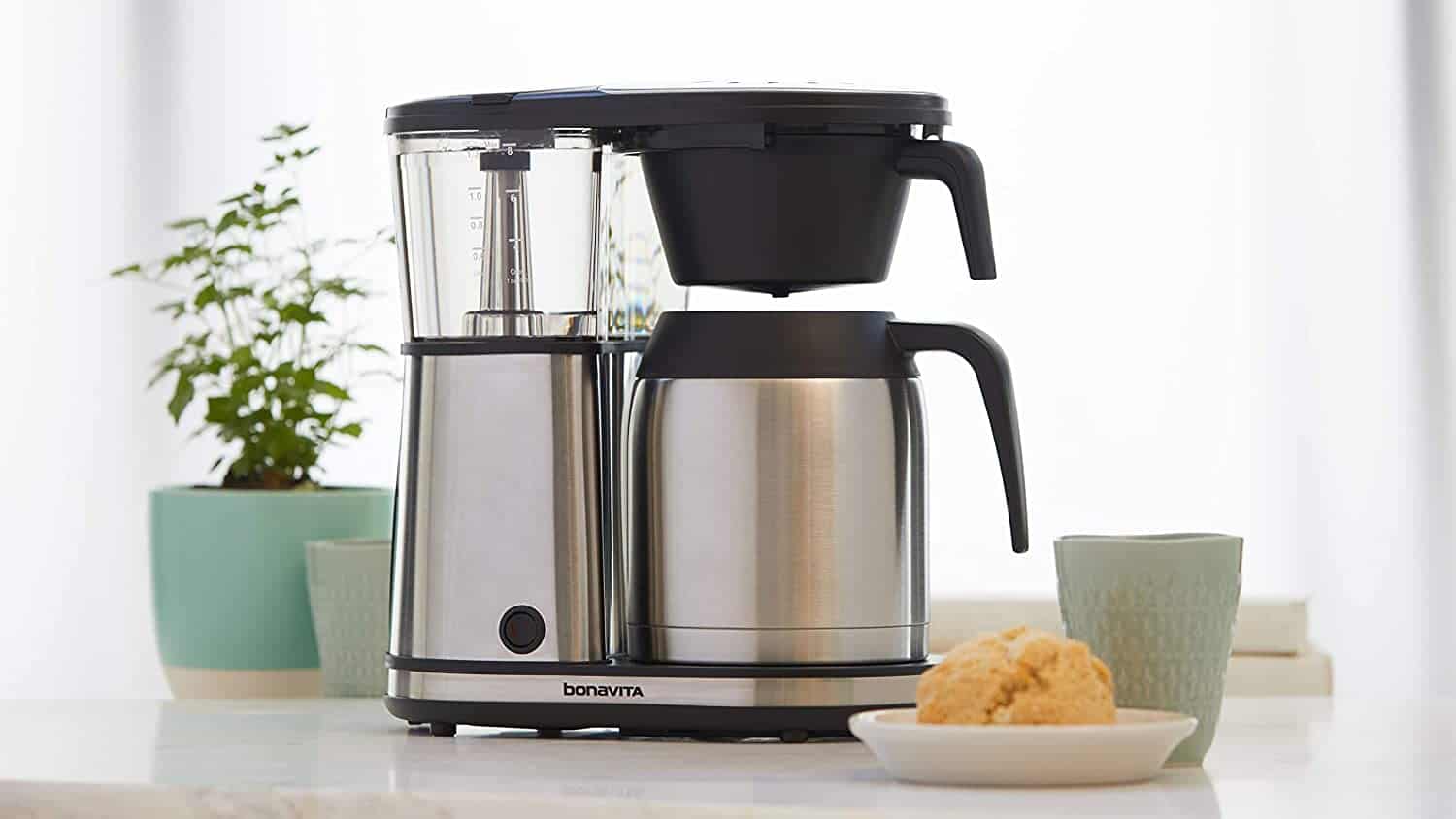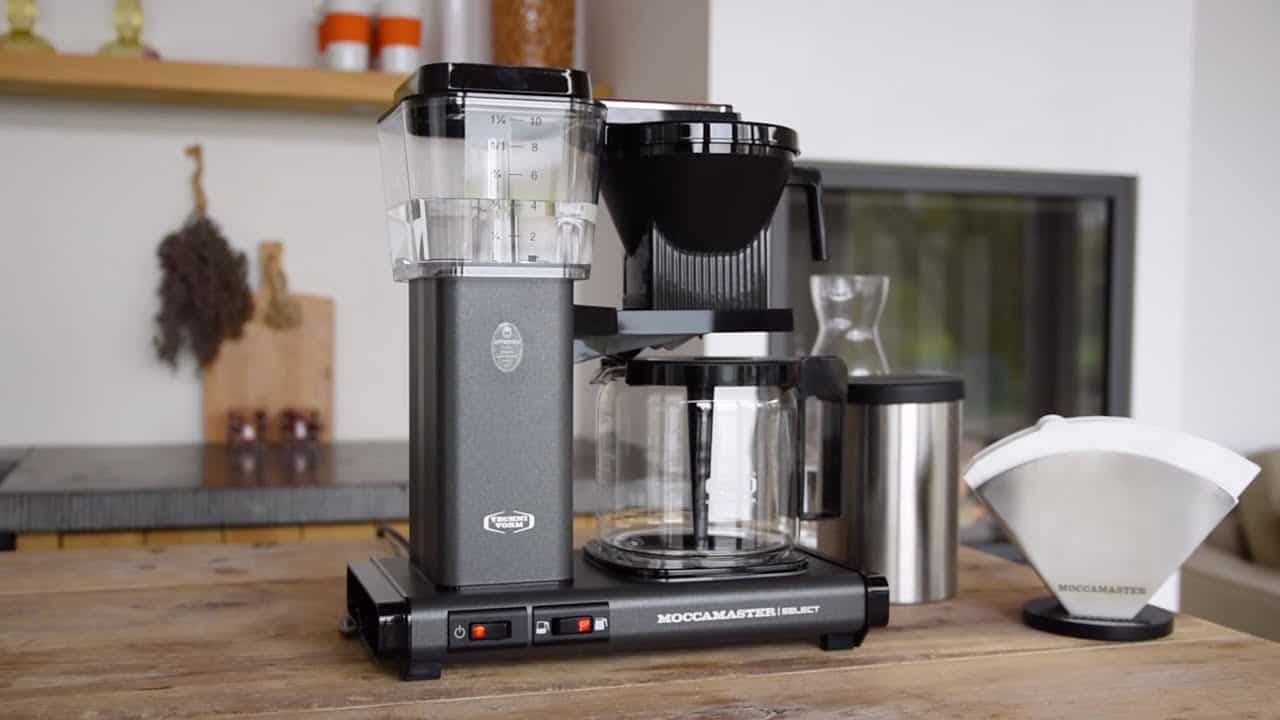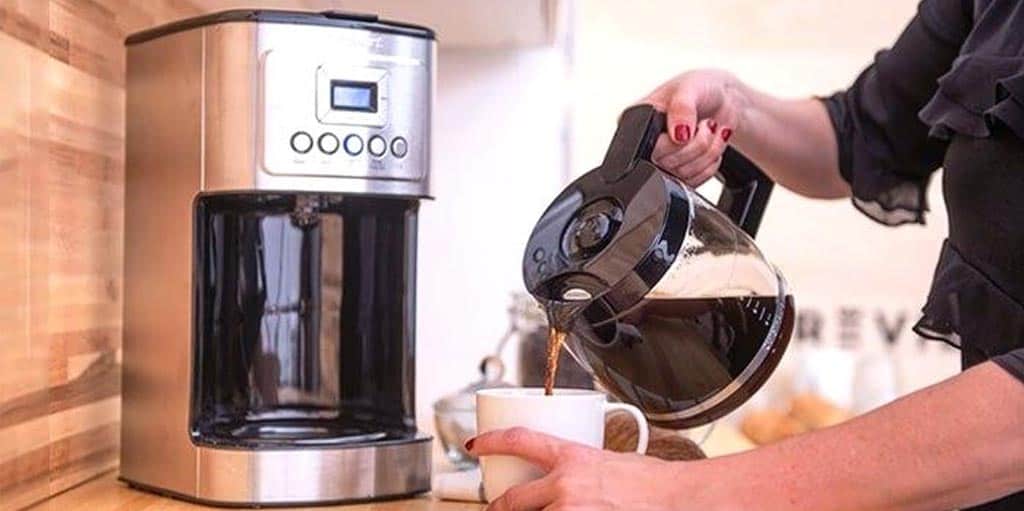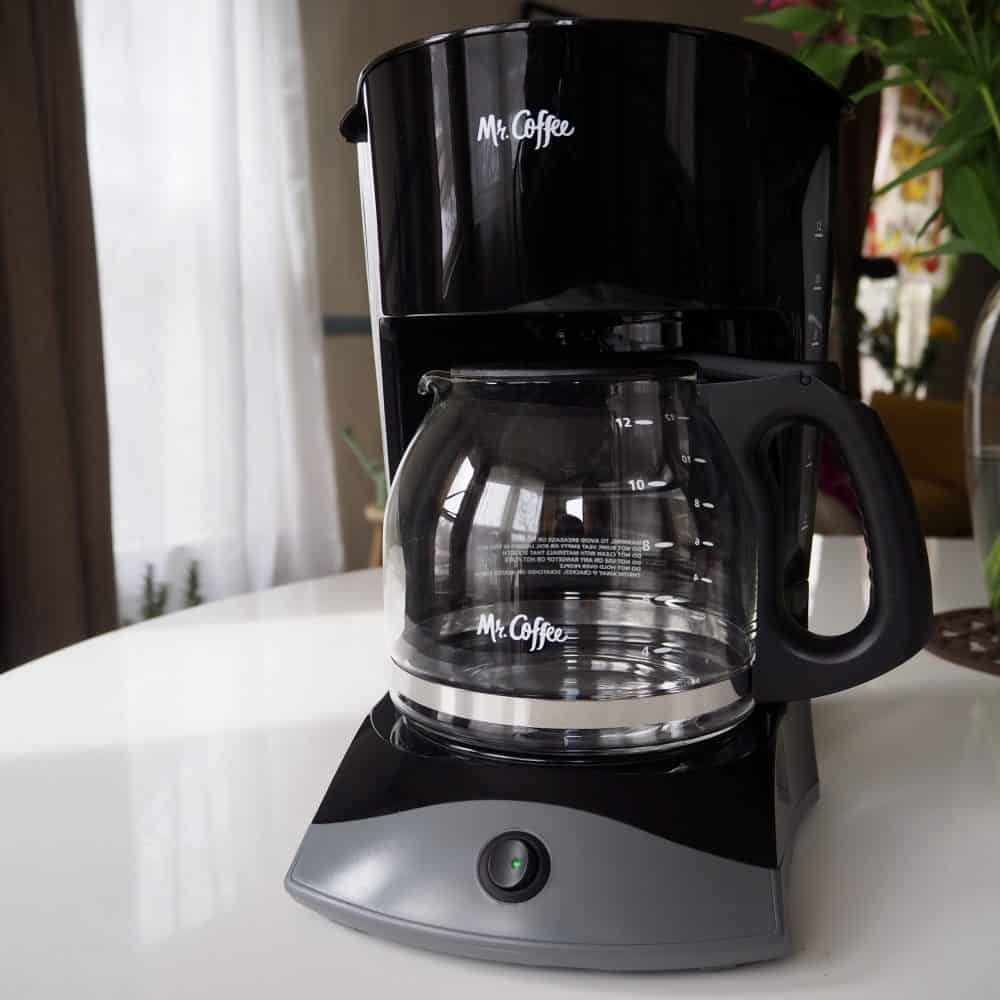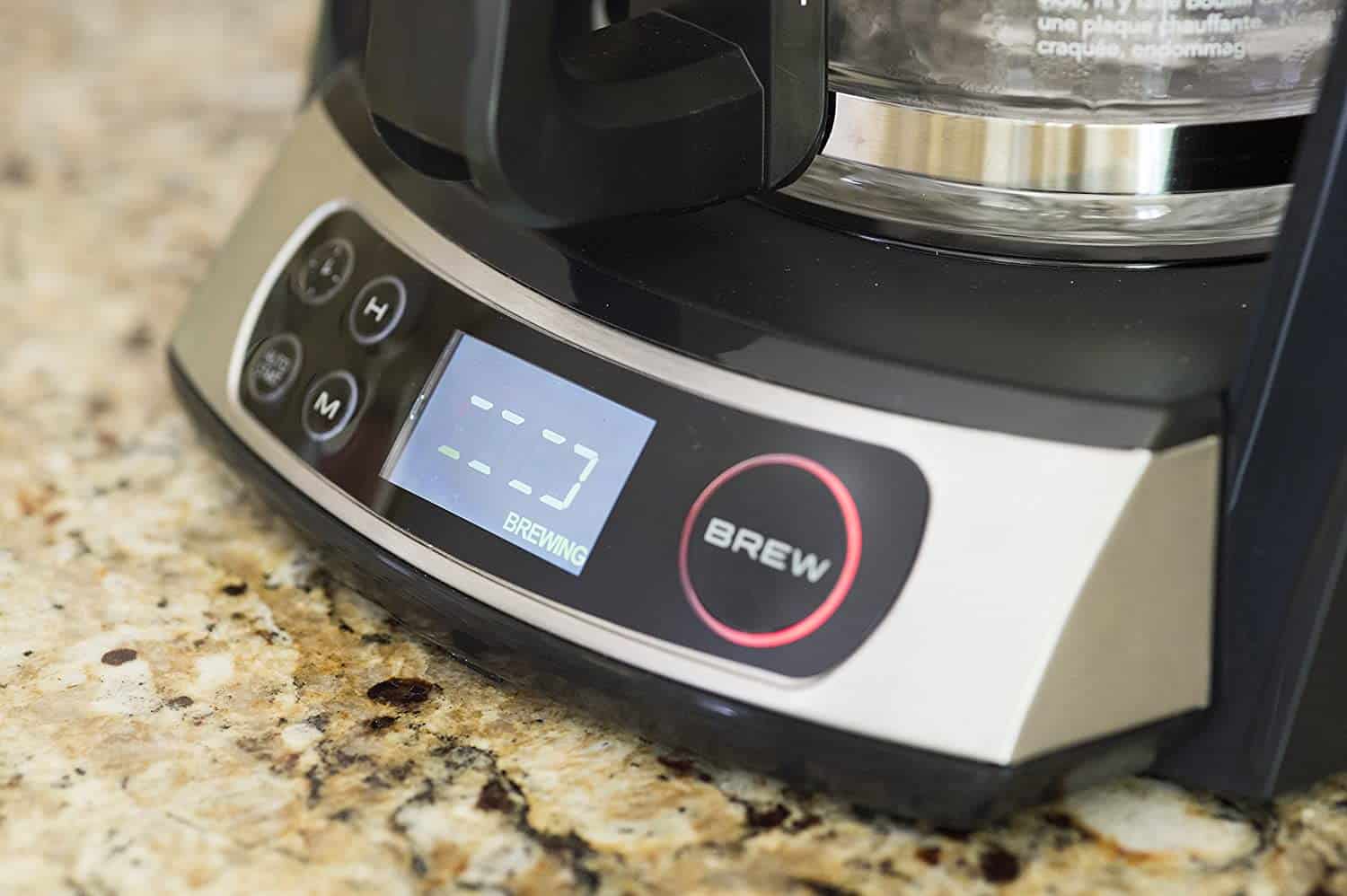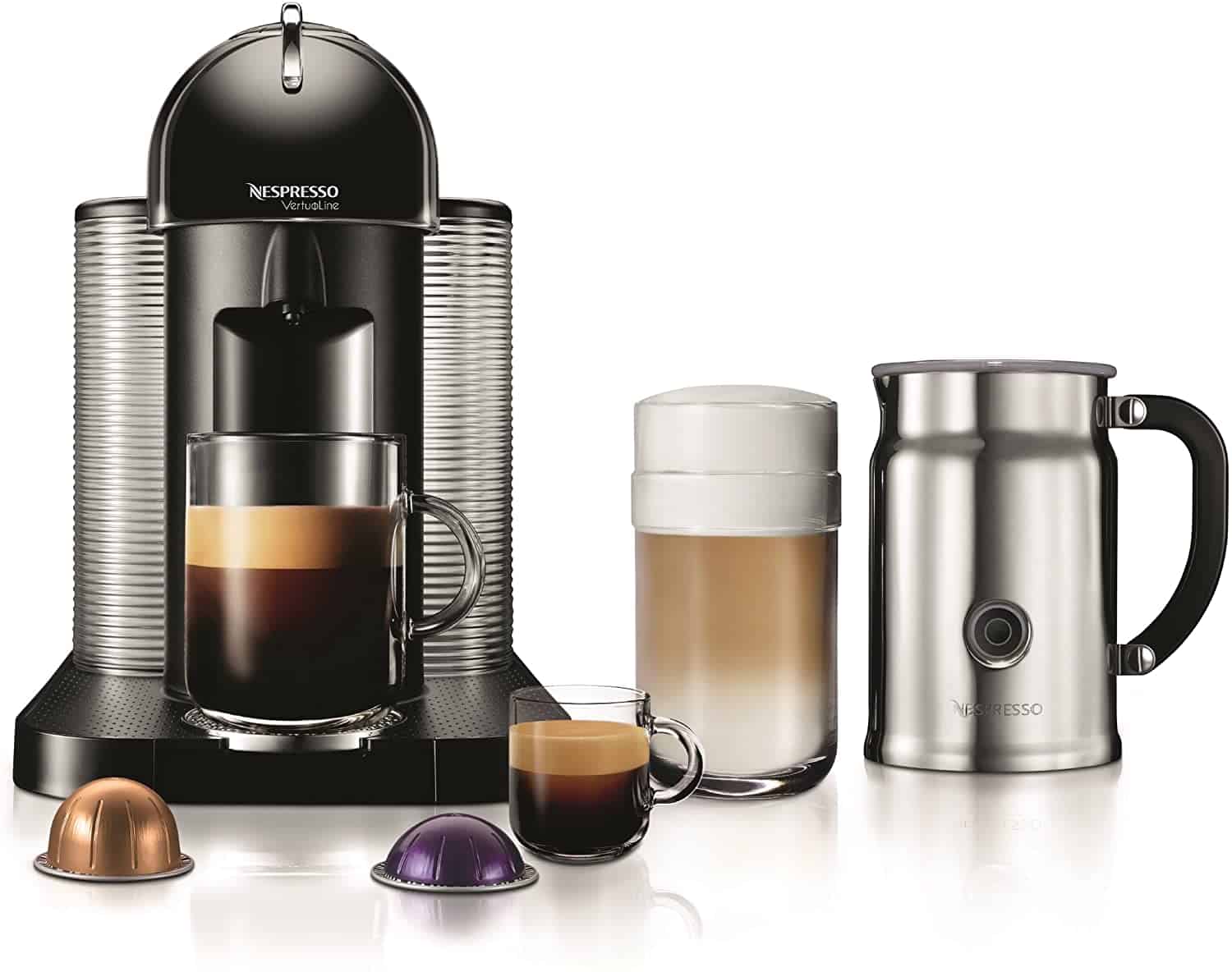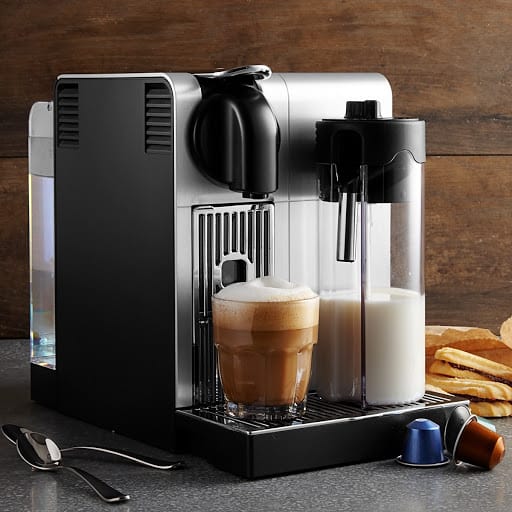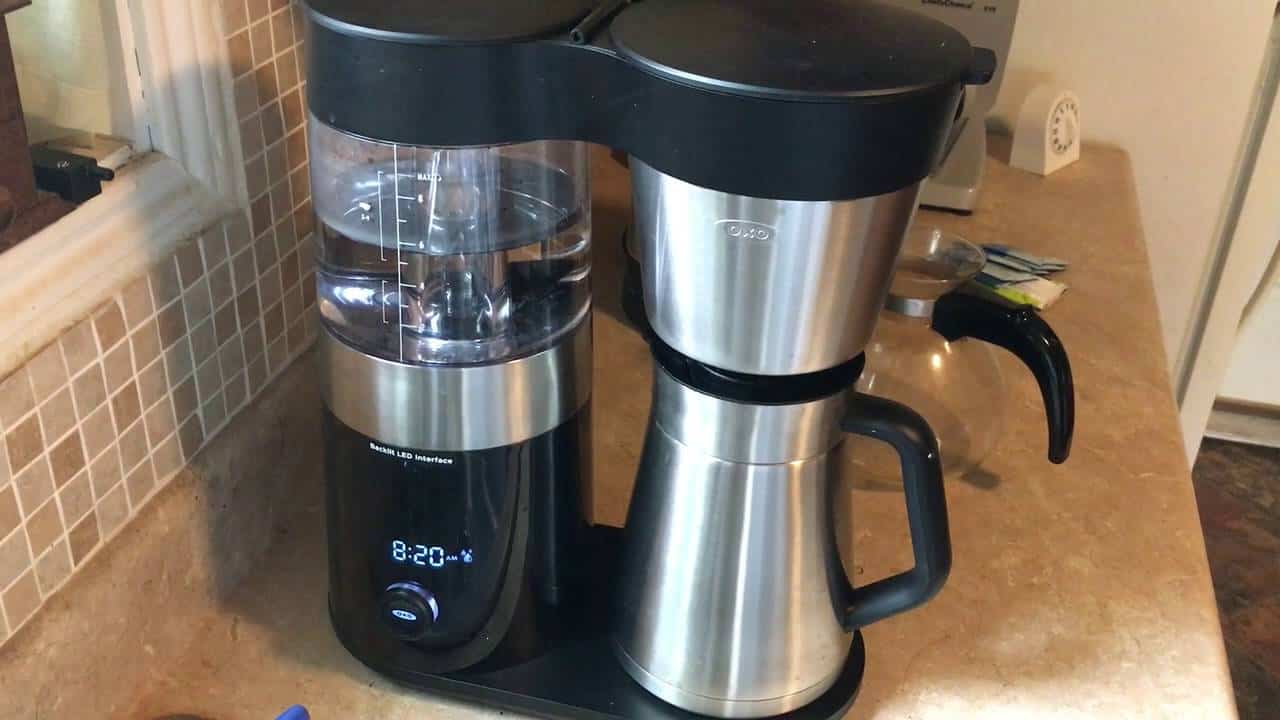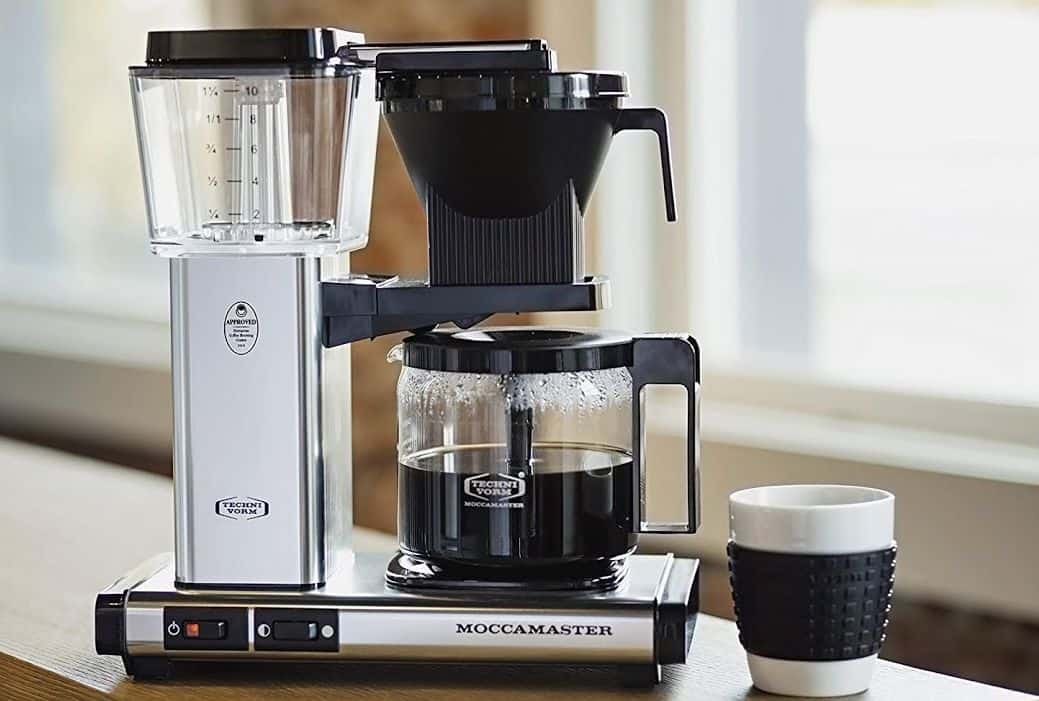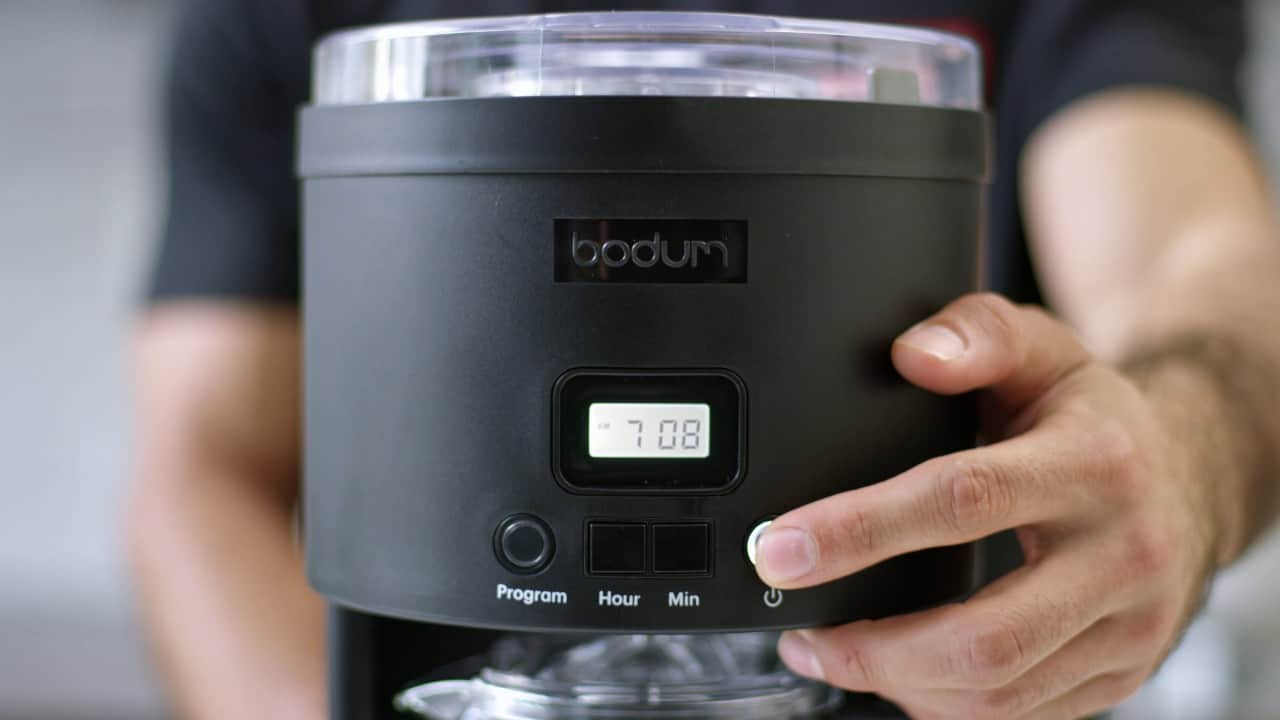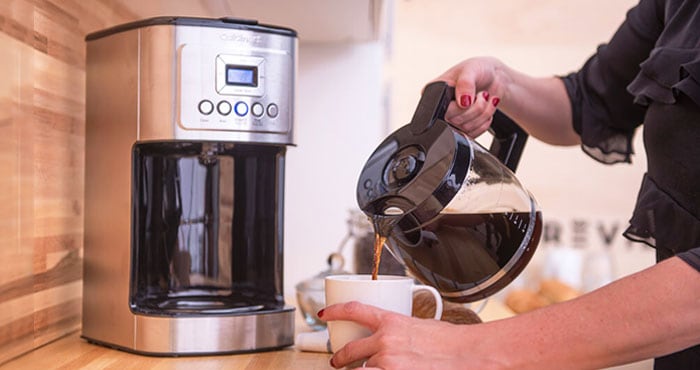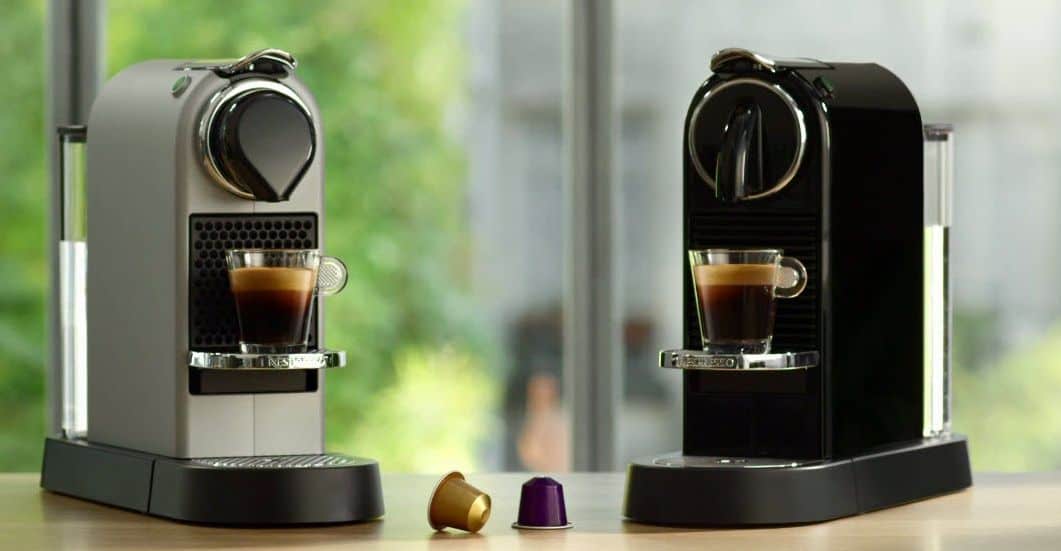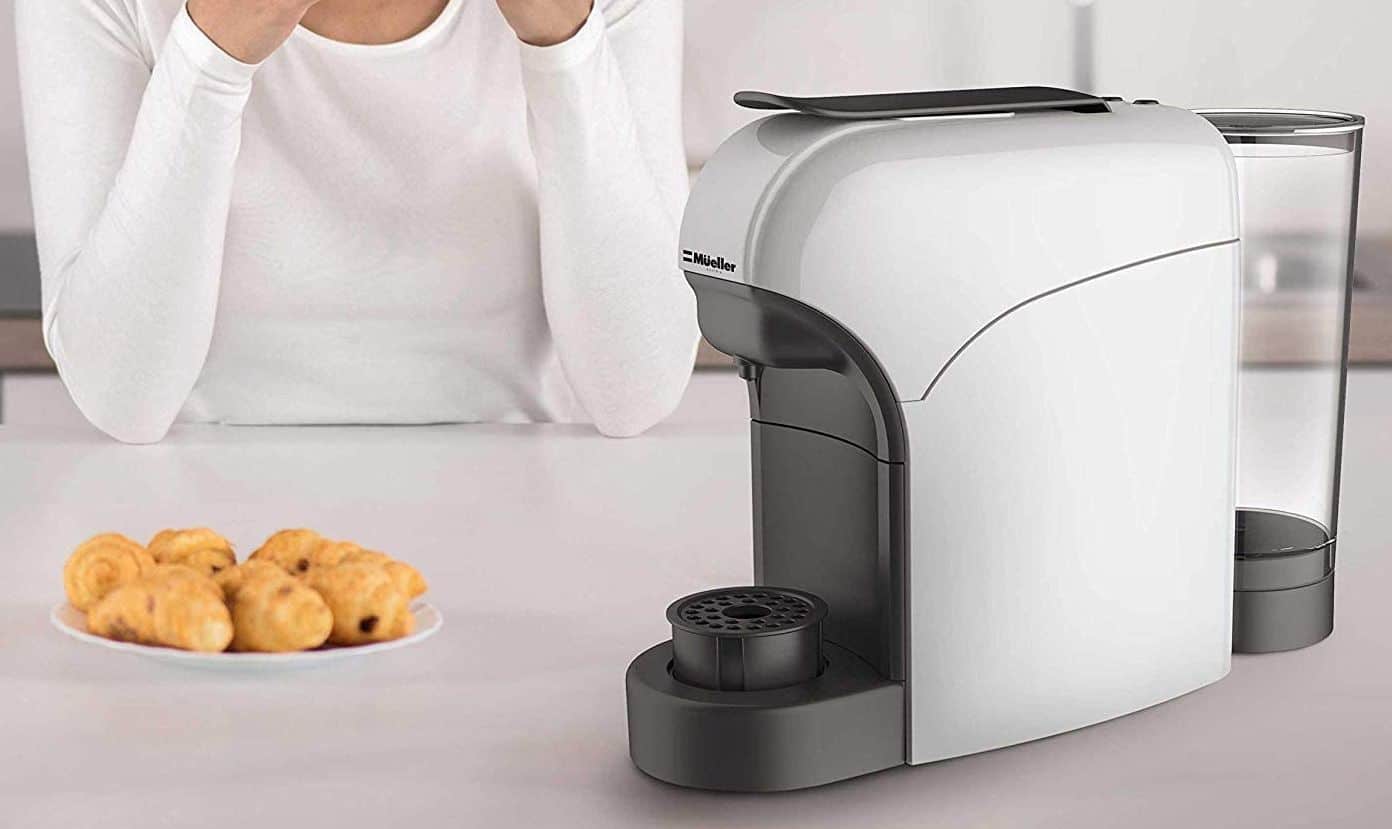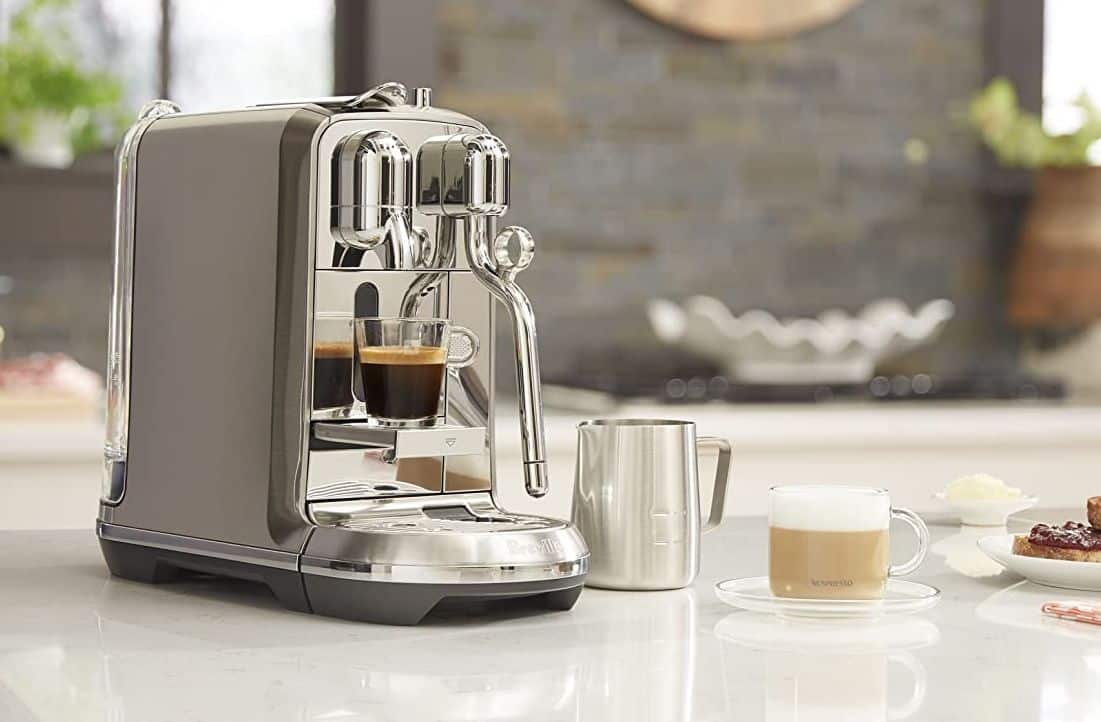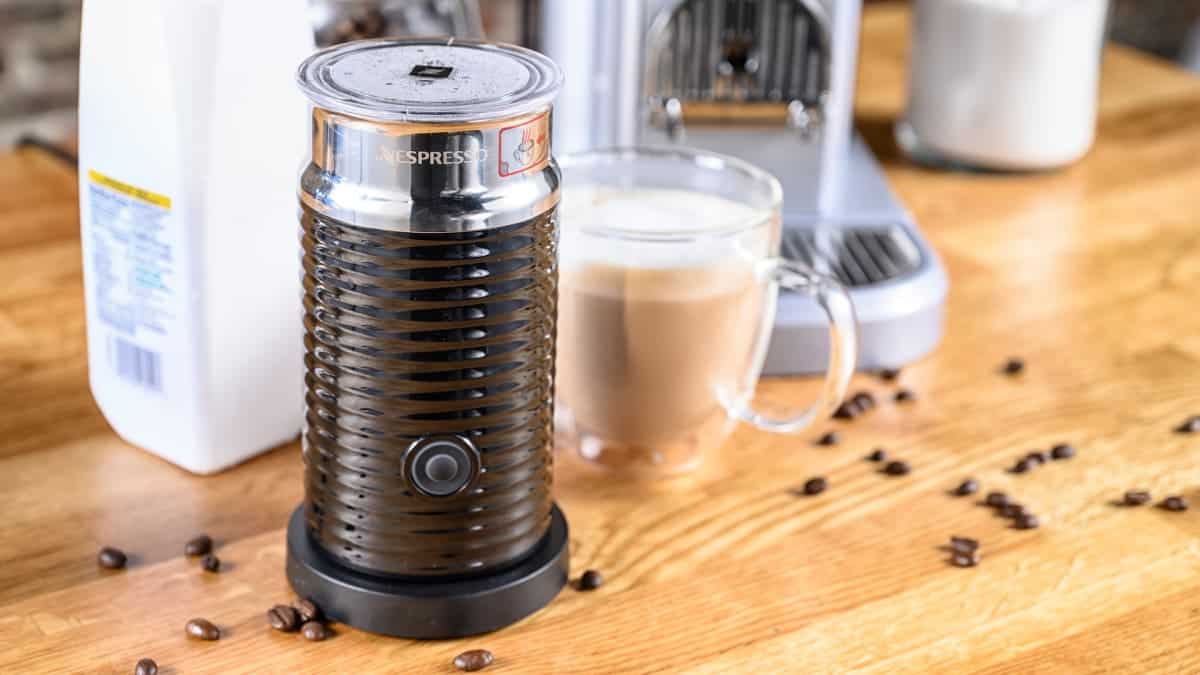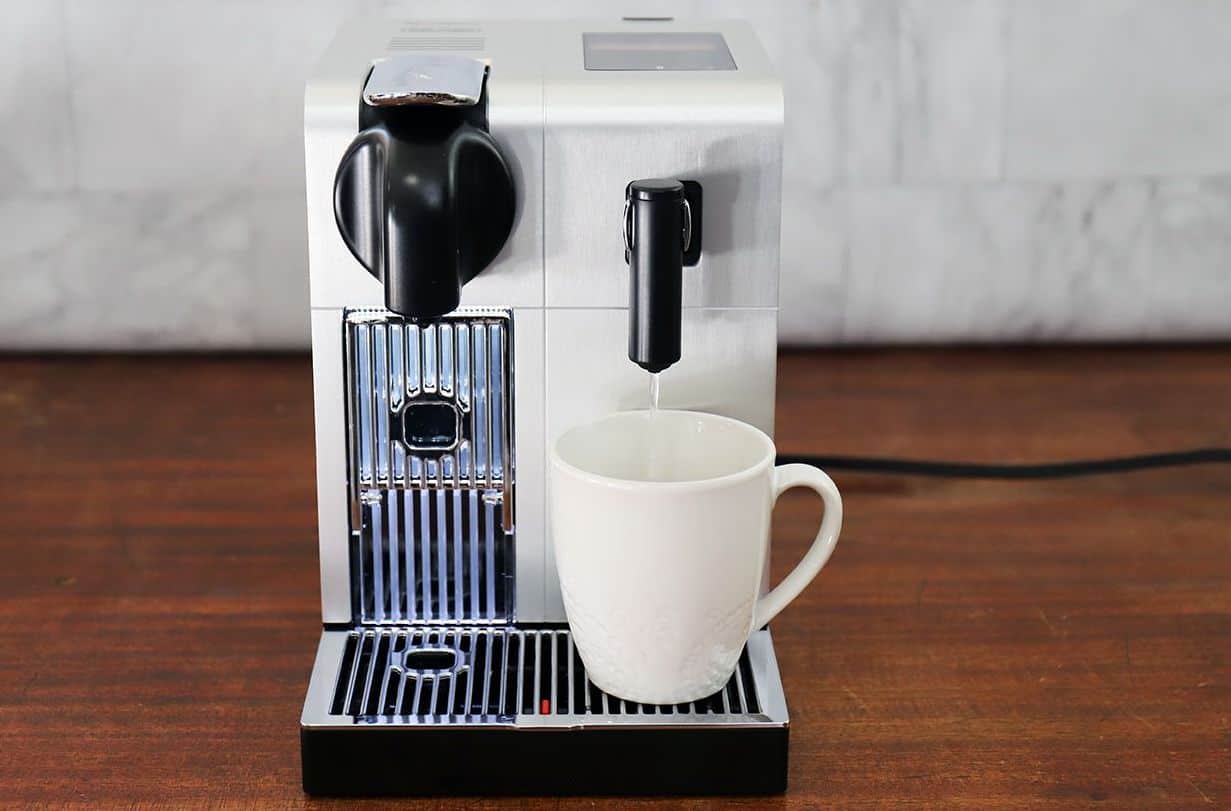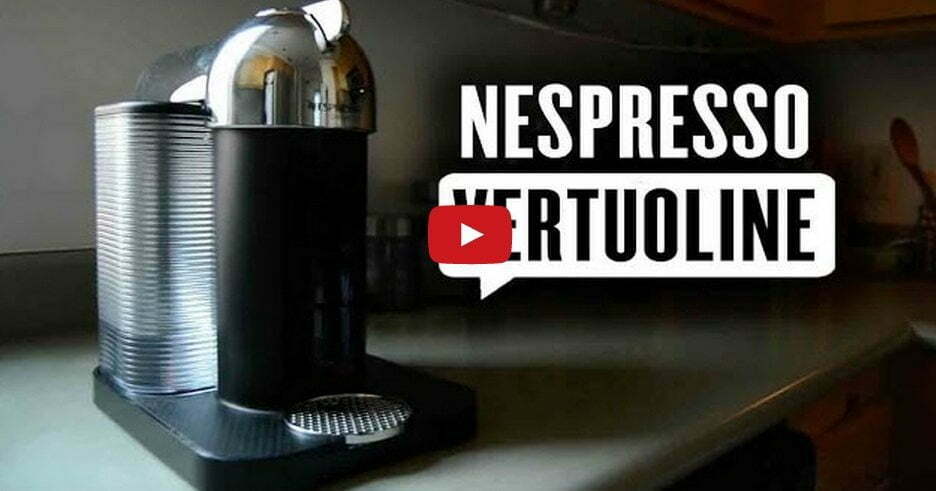Even if you have the best coffee maker, you may run into technical problems over time. One of the most frustrating coffee maker issues is when they stop making hot water. Unless you’re making cold brew coffee, the heating cycle must happen if you want a hot cup of coffee. Fortunately, we can help you pinpoint where your brewing cycle has broken down. So, if you need to know why coffee makers stop heating up, read on.
KEY TAKEAWAYS:
- If your coffee maker stops heating up and only releases cold water, the most likely culprit is the heating element.
- Next, look at your thermostat to make sure it is accurately reading your brew temperature.
- Lastly, if you notice an active descale light, you should run a cycle of water and descaling solution.
Why is My Drip Coffee Maker Not Brewing Hot Coffee?
Unfortunately, if your drip-coffee machine isn’t heating water to 194-205 degrees Fahrenheit, your morning cup will taste like tap water. While this common issue is no doubt concerning, only a few points along the brew cycle will cause a cold pot of coffee. That said, unless you’re comfortable making repairs to coffee makers, you want to find an authorized service technician.
Insider Tip
Perform cleaning cycles regularly to prevent calcium and lime deposits from blocking your hot water pipe and pump system.
If you want excellent coffee, find out why you use coffee filters in the brew cycle.
Heating Element
The horseshoe-shaped heating element is located on the bottom of your coffee maker. Not only does the heating element make your coffee hot, but it also powers the heating device in the warming plate. Be extra careful while investigating your resistive heating element, because it can short out other electrical systems if it becomes flooded with brew water.
Thermostat
The thermostat affects the temperature control switch and sits on the heating element. A faulty thermostat will not communicate with the thermometer. In addition, your heating element will not know whether to heat or cool during the brew cycle. Most models use a snap design which makes them easy to replace, but some require desoldering.
Clogged Water Pump
Suppose your automatic coffee maker is also losing water. In that case, a clogged water pump is a significant reason why coffee makers leak. That said, lime buildup in the pump can contribute to many issues, including cold coffee. Run a mixture of water and descaling solution through your machine to clear away any lime deposits on the water pump or in the water tank itself.
Warning
Remove your coffee maker from its power source before testing the electronic control board. The internal wiring can shock you if it’s still in the power outlet.
F.A.Q.S
How to know when it’s time to replace your coffee maker?
You should treat your coffee maker just like any other kitchen appliance. If the repairs to your unit exceed the price of a new one, buy a new coffee maker. That said, if your machine is under three years old, consider repairing it if the cost doesn’t exceed 50% of your original purchase.
How to increase a lifespan of an automatic coffee maker?
The most crucial factor for keeping your coffee maker around is cleanliness. Ensure that you wipe down the coffee maker and filter basket after every cycle. In addition, treat your machine with descaler every 2-4 months.
What is the best coffee grinder for home use?
While an electronic grinder is convenient, consider using a hand grinder for coffee shop quality ground coffee. With manual grinding, you can truly dial in the ideal grind size for your bed of coffee grounds.
STAT: Between 1910 and 1950, the per capita coffee availability in the United States rose by 78 percent, partially due to the invention of instant coffee grounds in 1938. (source)
















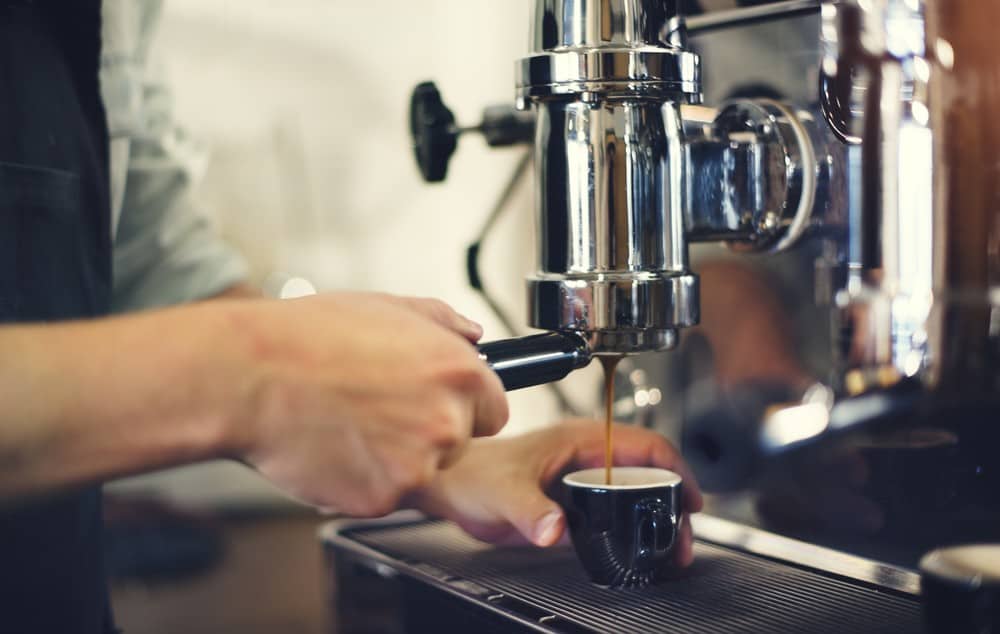
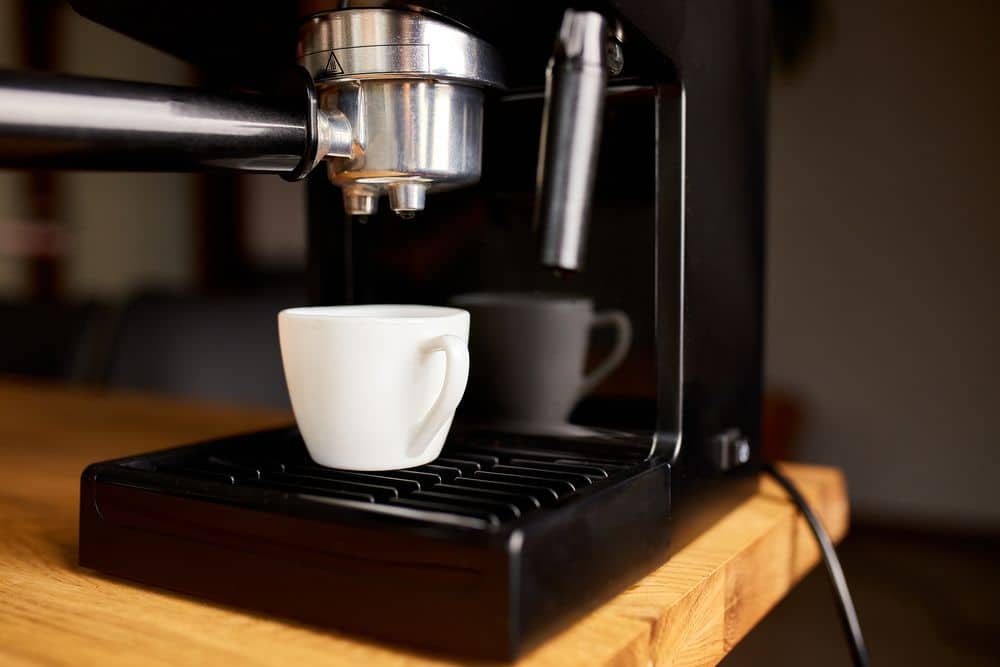
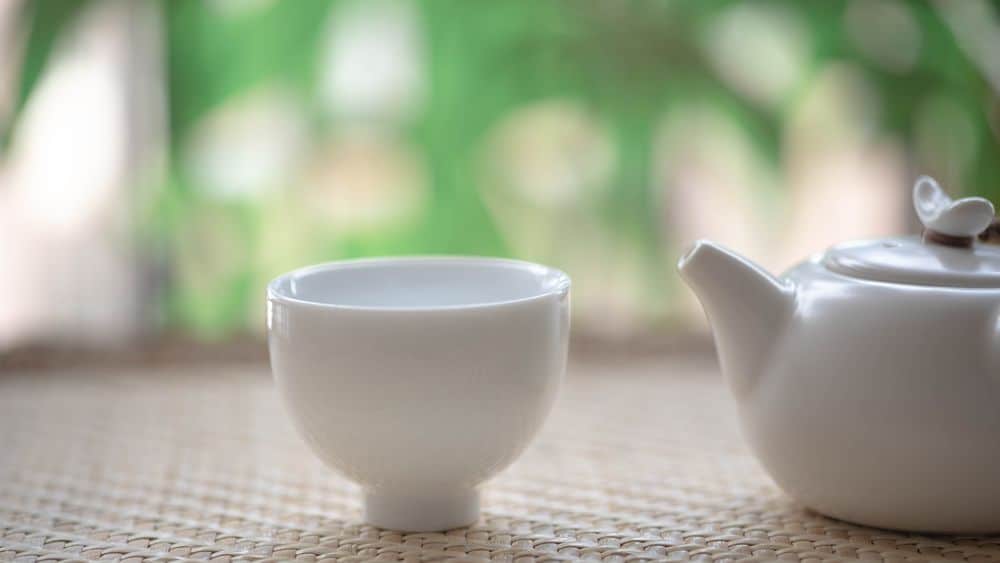
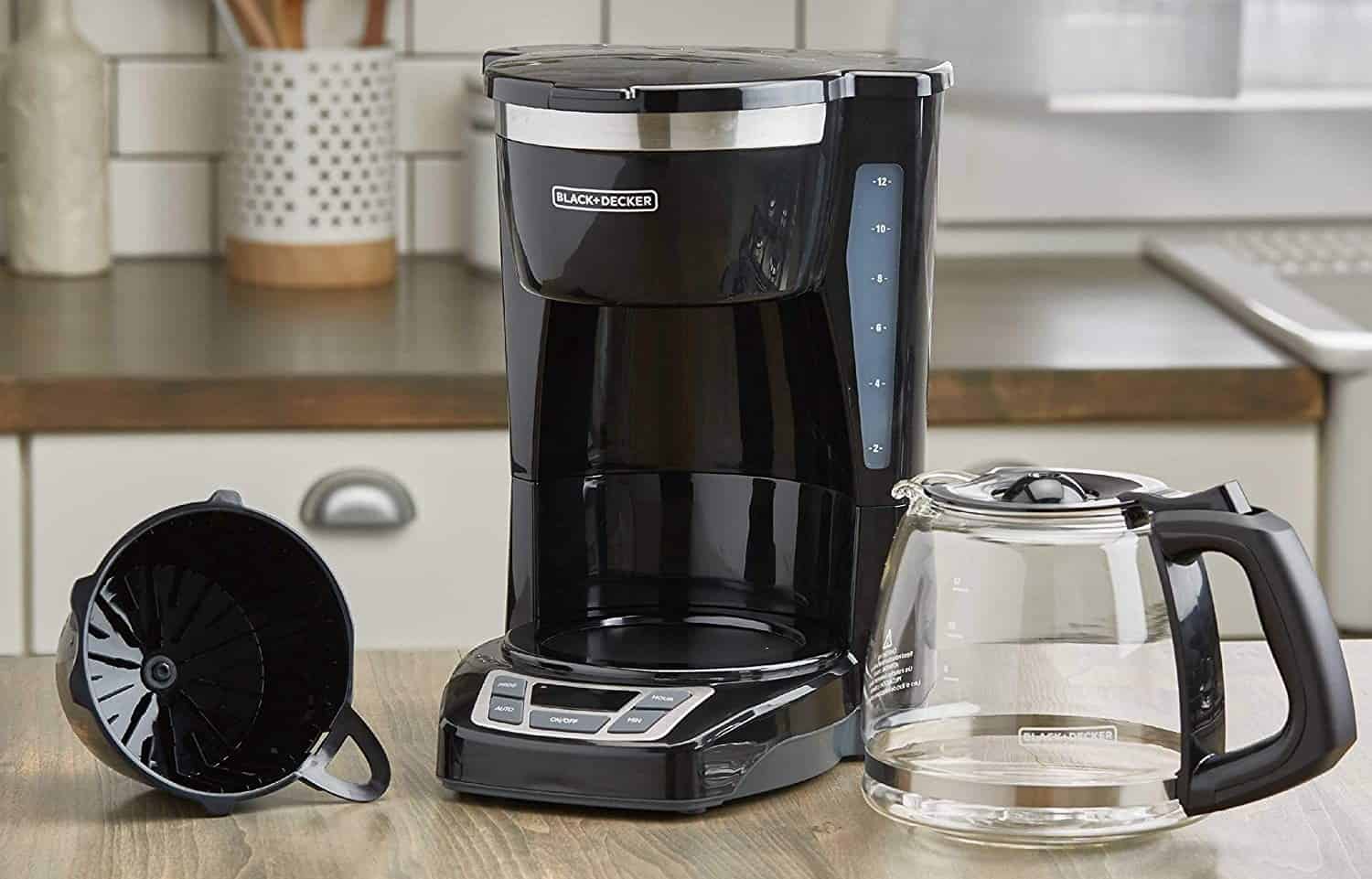
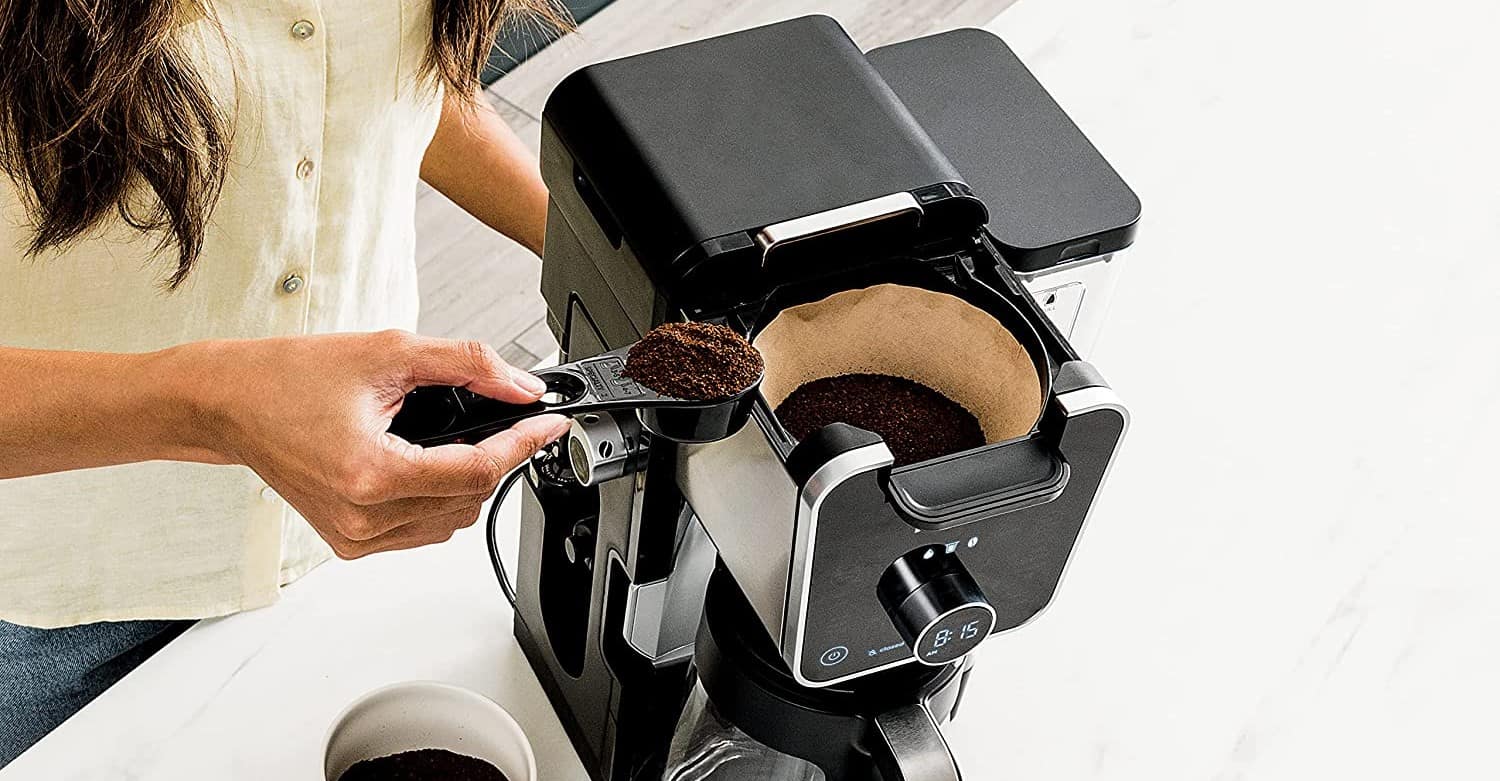
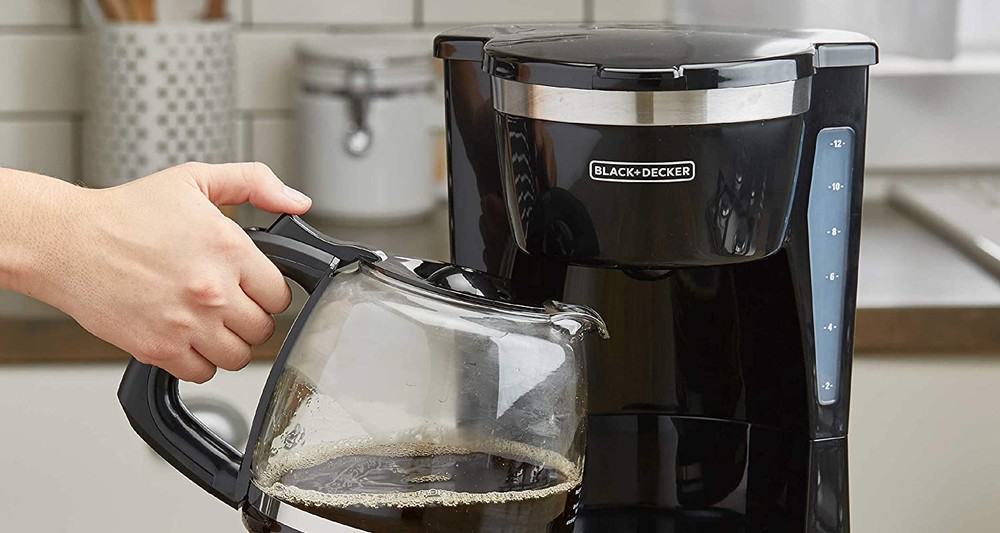
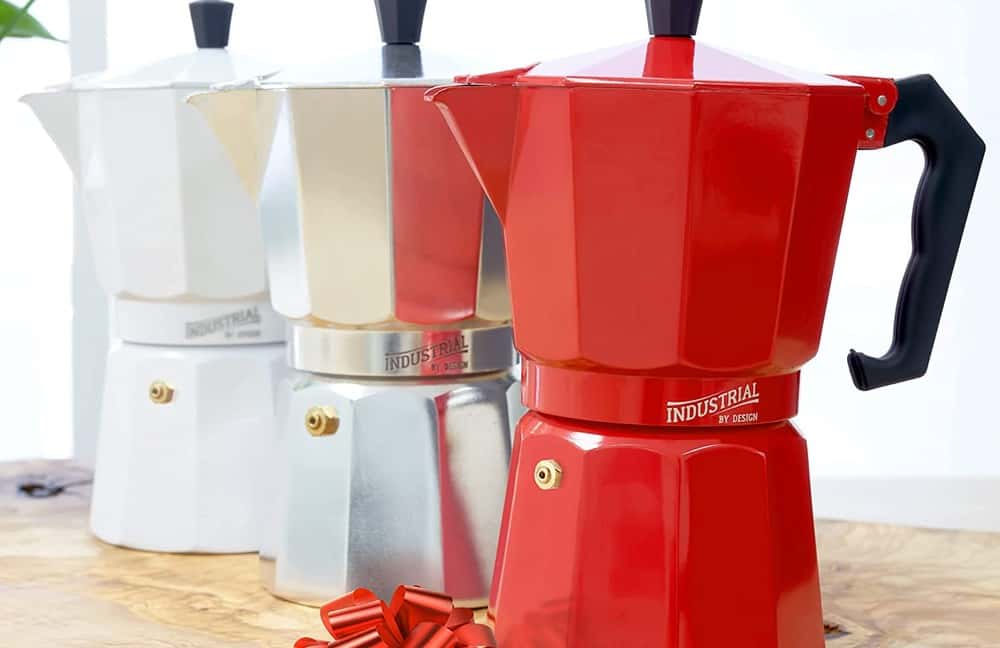
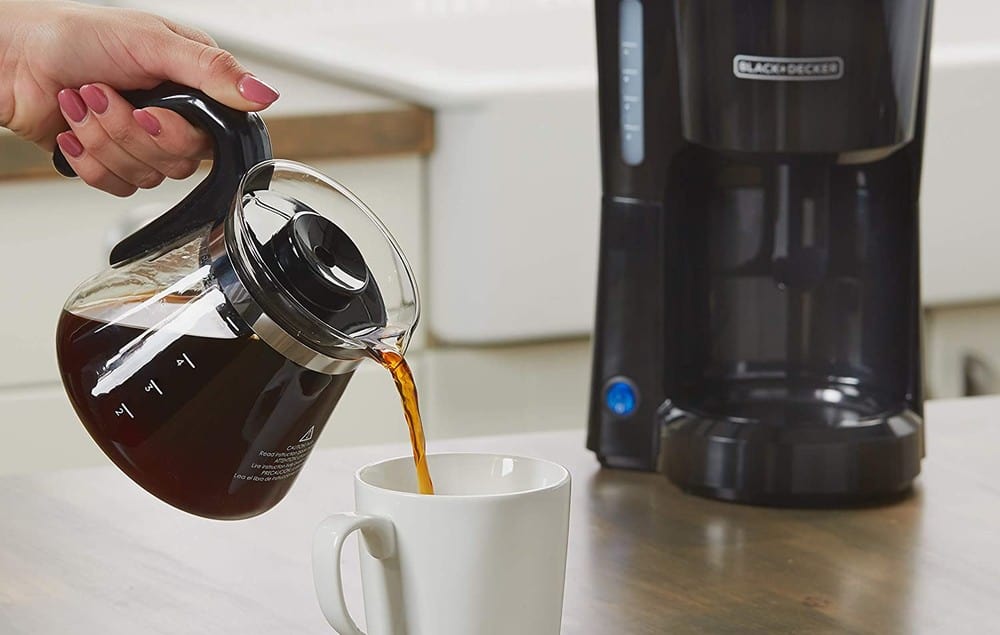
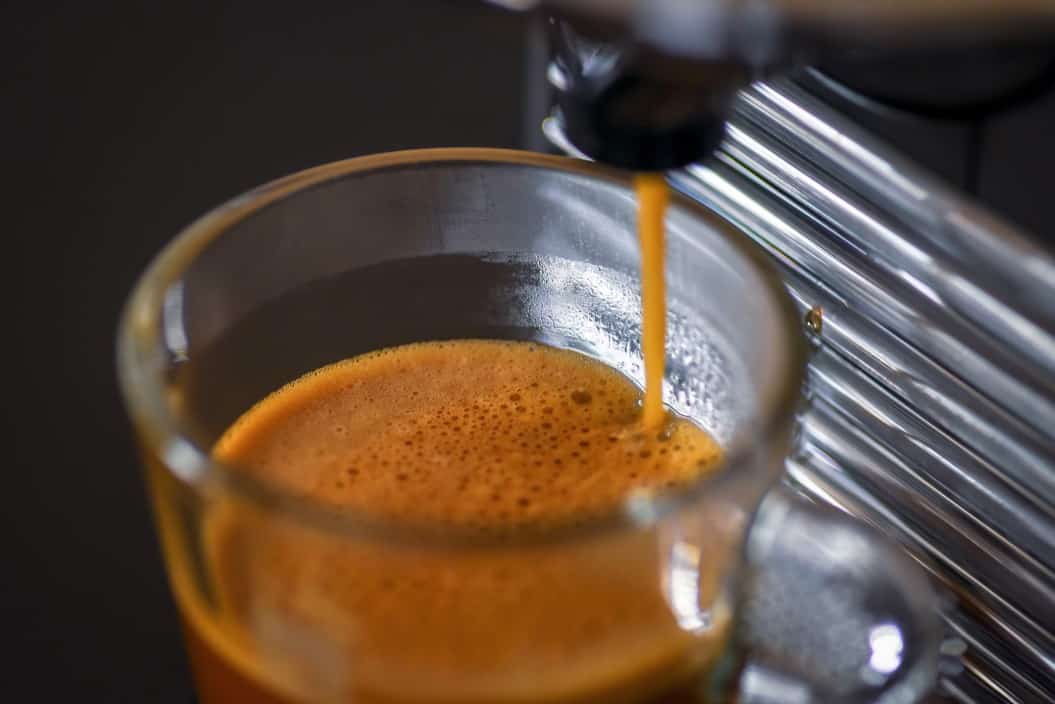
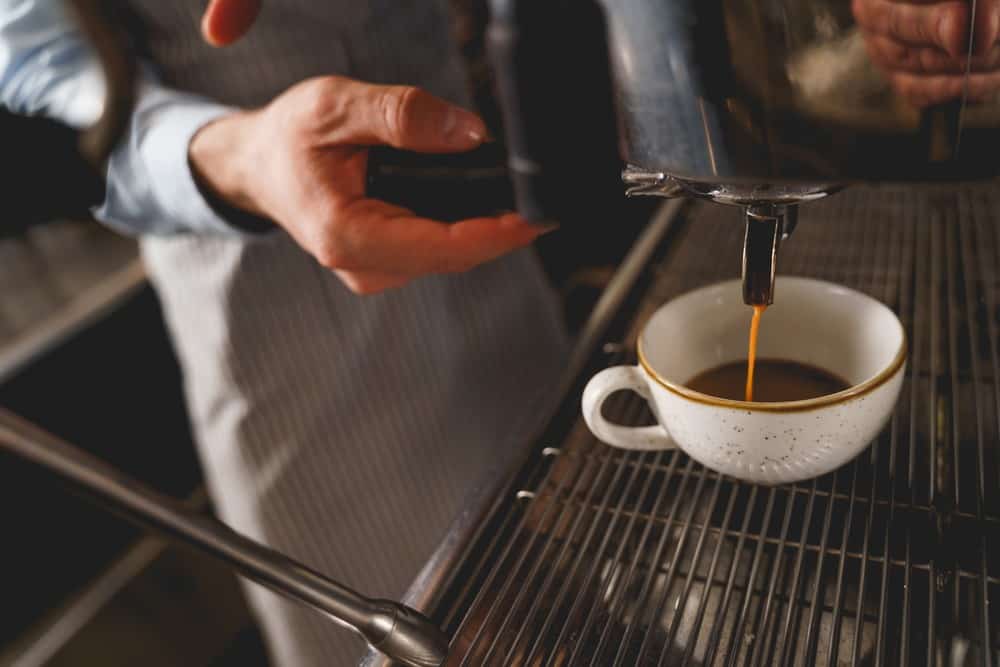
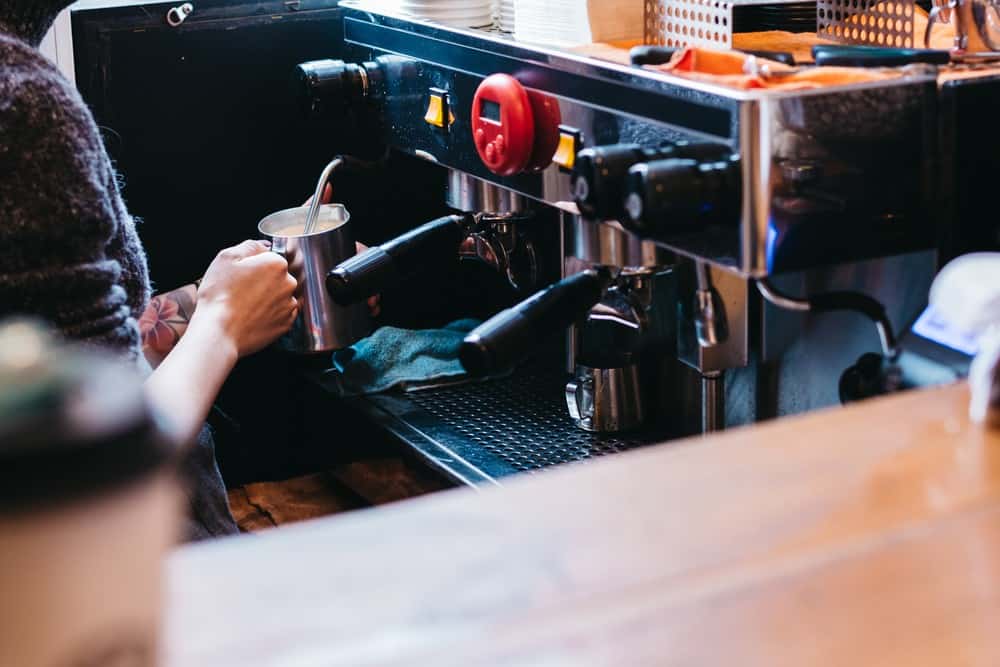

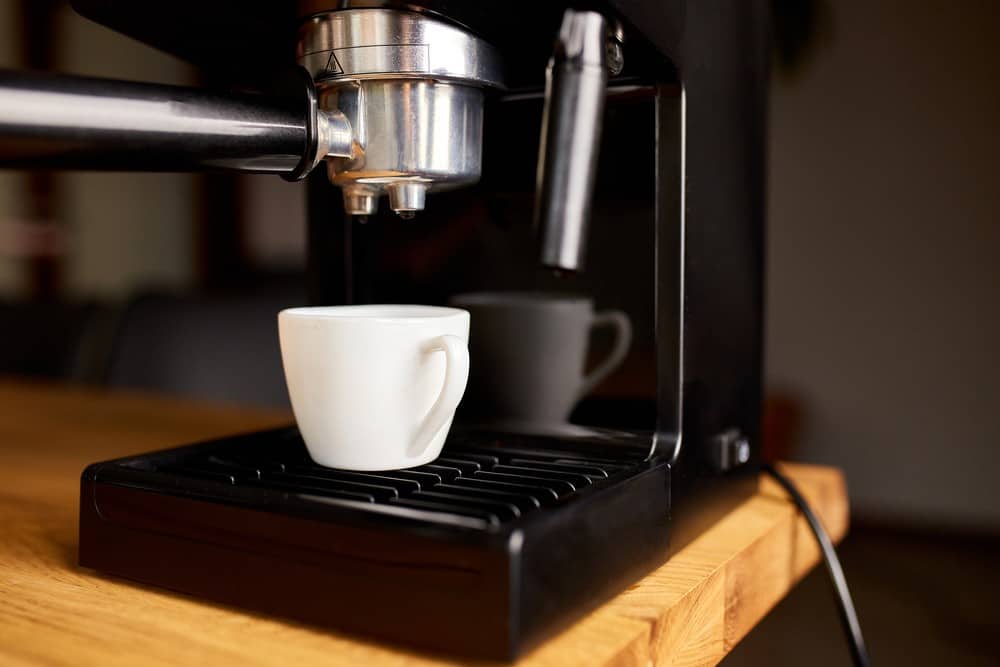
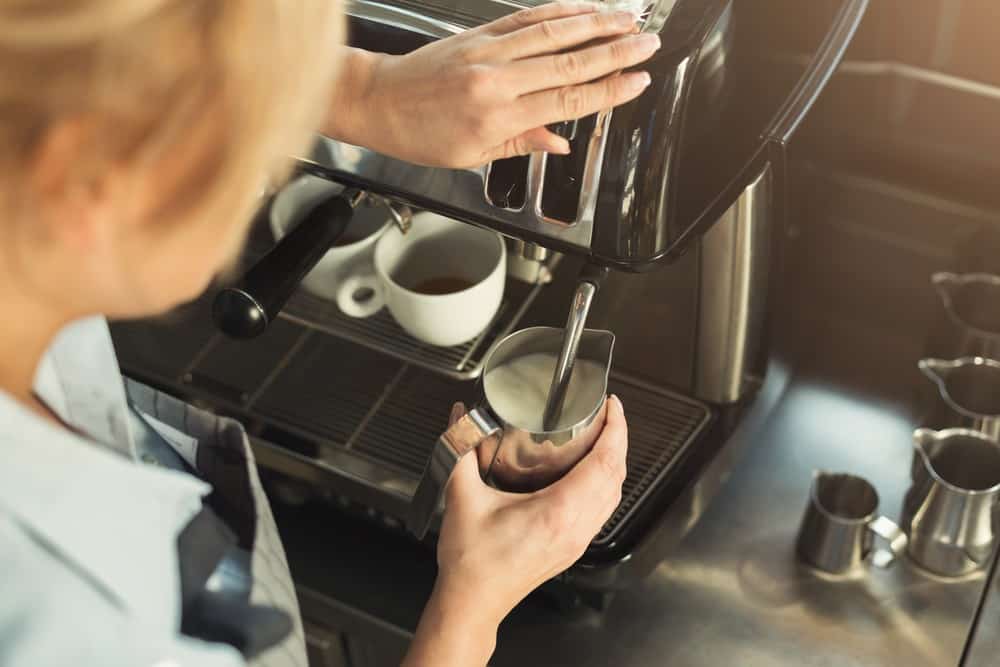
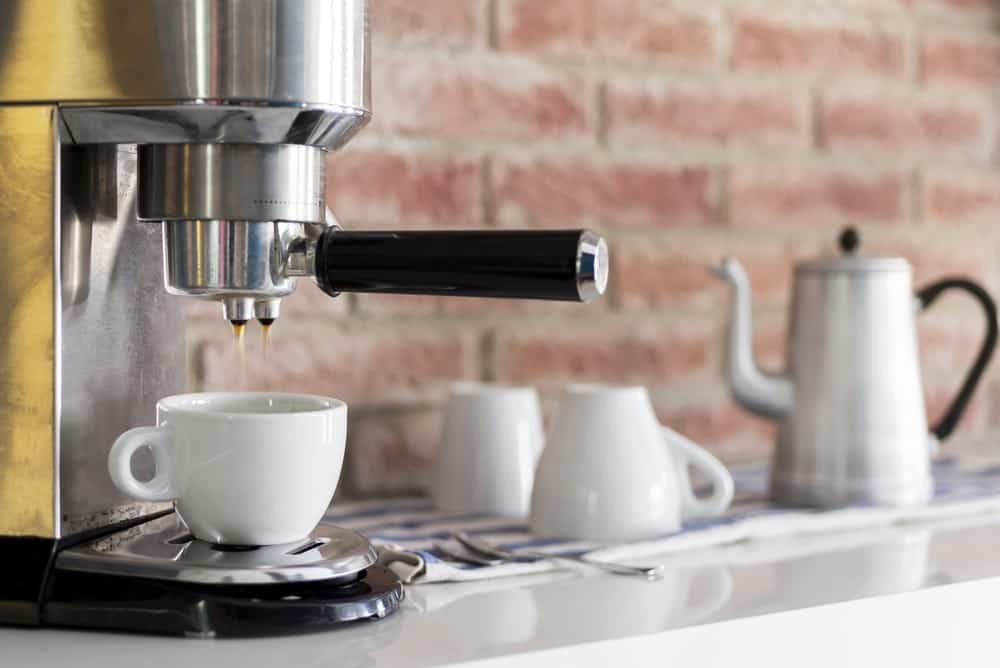
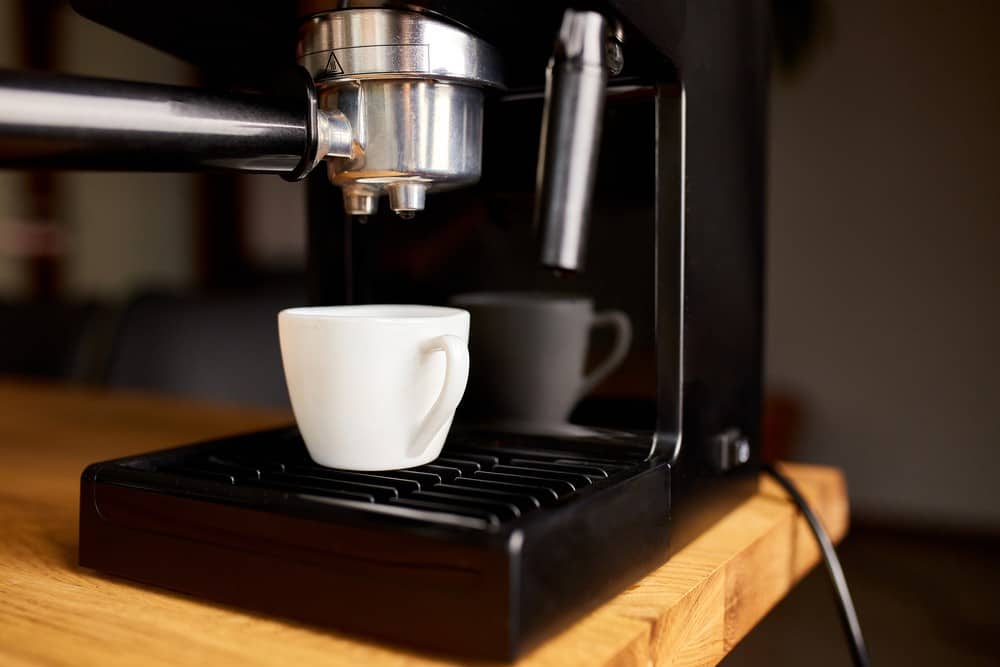
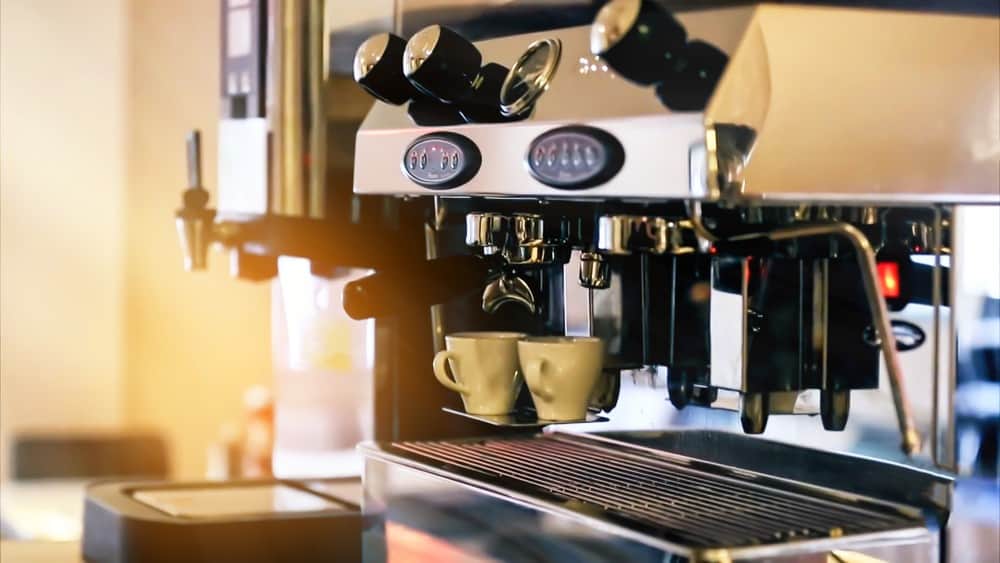
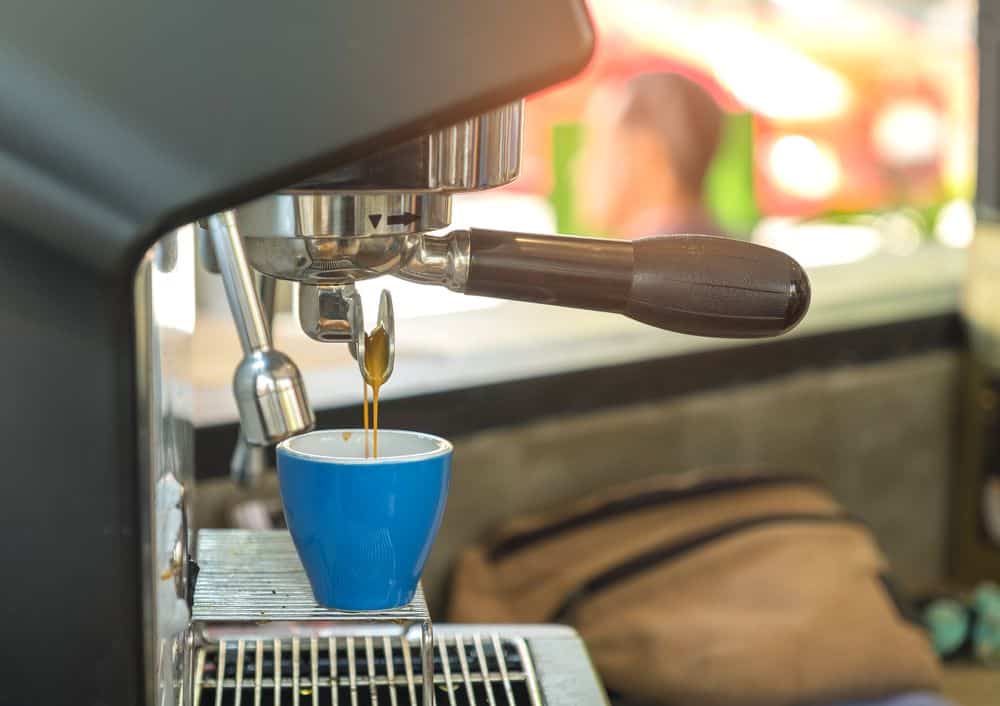
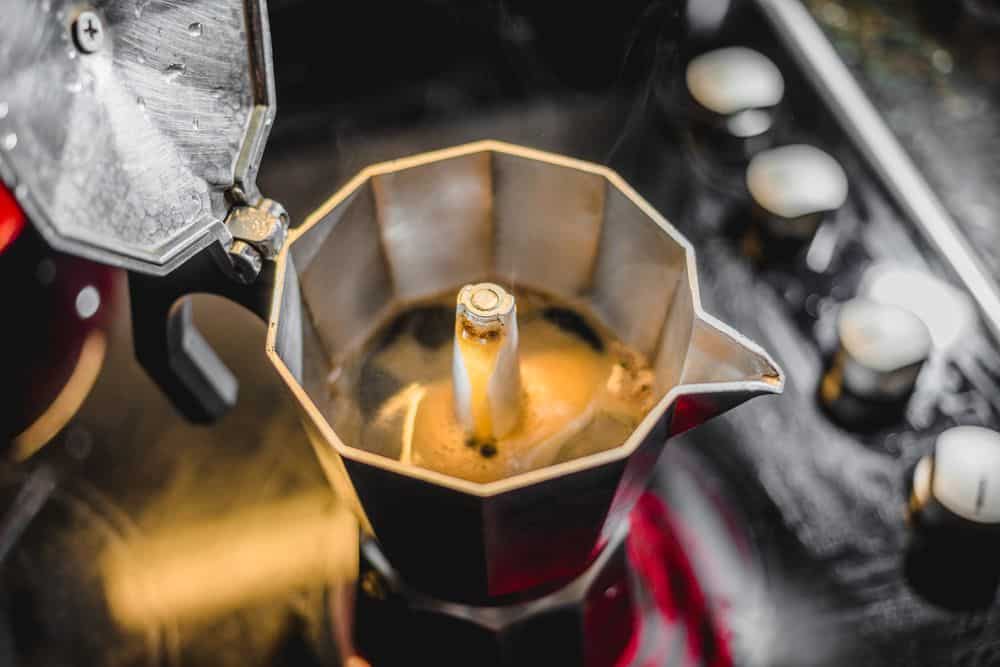
![Best Keurig Alternatives in [year] 27 Best Keurig Alternatives in 2025](https://www.gadgetreview.dev/wp-content/uploads/best-keurig-alternative-image.jpg)
![Best Semi Automatic Espresso Machines in [year] 28 Best Semi Automatic Espresso Machines in 2025](https://www.gadgetreview.dev/wp-content/uploads/best-semi-automatic-espresso-machine-image.jpg)
![Best Coffee and Espresso Makers in [year] 29 Best Coffee and Espresso Makers in 2025](https://www.gadgetreview.dev/wp-content/uploads/best-coffee-and-espresso-maker-image.jpg)
![Best Kitchen Appliances in [year] ([month] Reviews) 30 Best Kitchen Appliances in 2025 (April Reviews)](https://www.gadgetreview.dev/wp-content/uploads/best-kitchen-appliances.jpg)
![Quietest Coffee Makers in [year] 31 Quietest Coffee Makers in 2025](https://www.gadgetreview.dev/wp-content/uploads/quietest-coffee-maker-image.jpg)
![Best Prosumer Espresso Machines in [year] 32 Best Prosumer Espresso Machines in 2025](https://www.gadgetreview.dev/wp-content/uploads/71ytF6efAlL._AC_SL1500_.jpg)
![Best Single Serve Coffee Maker No Pods in [year] 33 Best Single Serve Coffee Maker No Pods in 2025](https://www.gadgetreview.dev/wp-content/uploads/best-k-pod-coffee-image-1.jpg)
![Best Coffee Makers for Hard Water in [year] 34 Best Coffee Makers for Hard Water in 2025](https://www.gadgetreview.dev/wp-content/uploads/best-coffee-maker-for-hard-water-image.jpg)
![Best Dual Boiler Espresso Machines in [year] 35 Best Dual Boiler Espresso Machines in 2025](https://www.gadgetreview.dev/wp-content/uploads/best-dual-boiler-espresso-machine-image.jpg)
![Best SCAA Certified Coffee Makers in [year] 36 Best SCAA Certified Coffee Makers in 2025](https://www.gadgetreview.dev/wp-content/uploads/best-scaa-certified-coffee-maker-image.jpg)
![Best Smart Coffee Makers in [year] 37 Best Smart Coffee Makers in 2025](https://www.gadgetreview.dev/wp-content/uploads/best-smart-coffee-maker-image.jpg)
![Best Coffee Makers for RV in [year] 38 Best Coffee Makers for RV in 2025](https://www.gadgetreview.dev/wp-content/uploads/best-coffee-maker-for-rv-image.jpg)
![Best Ninja Coffee Makers in [year] 39 Best Ninja Coffee Makers in 2025](https://www.gadgetreview.dev/wp-content/uploads/best-ninja-coffee-maker-image.jpg)
![Best Breville Espresso Machines in [year] 40 Best Breville Espresso Machines in 2025](https://www.gadgetreview.dev/wp-content/uploads/best-breville-espresso-machine-image.jpg)
![Best 5 Cup Coffee Makers in [year] 41 Best 5 Cup Coffee Makers in 2025](https://www.gadgetreview.dev/wp-content/uploads/best-5-cup-coffee-maker-image.jpg)
![Best Commercial Coffee Makers in [year] 42 Best Commercial Coffee Makers in 2025](https://www.gadgetreview.dev/wp-content/uploads/best-commercial-coffee-maker-image.jpg)
![Best Commercial Espresso Machine for a Small Coffee Shop in [year] 43 Best Commercial Espresso Machine for a Small Coffee Shop in 2025](https://www.gadgetreview.dev/wp-content/uploads/best-commercial-espresso-machine-small-coffee-shop-image.jpg)
![Best Coffee for Moka Pot in [year] 44 Best Coffee for Moka Pot in 2025](https://www.gadgetreview.dev/wp-content/uploads/best-coffee-for-moka-pot-image.jpg)
![Best USA Made Coffee Makers in [year] 45 Best USA Made Coffee Makers in 2025](https://www.gadgetreview.dev/wp-content/uploads/best-usa-made-coffee-makers-image.jpg)
![Fastest Coffee Makers in [year] 46 Fastest Coffee Makers in 2025](https://www.gadgetreview.dev/wp-content/uploads/fastest-coffee-maker-image.jpg)
